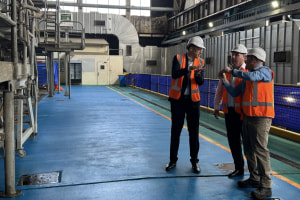Alland & Robert has introduced a new gum for the formulation of coatings, fillings, dressings, desserts and emulsified sauces.
Karaya Gum comes from wild Sterculia trees, and the French ingredients company says it has developed a new method of physical treatment that reduces the total plate count of hydrocolloids while preserving all their functional properties.
This treatment is based on flash heating, which assures a homogeneity of the temperature within the treated gums.
This has “opened new horizons to Karaya gum”, Alland & Robert says, as it may now be used alone or in association with other hydrocolloids for the formulation of coatings, fillings, dressings, desserts and emulsified sauces.
Karaya gum is obtained by the incision of the stems and branches of Sterculia trees, and is hand-collected from the trees, which grow in Africa and India.
It has been used for many centuries, and is still very common in traditional African and Indian cooking, according to Alland & Robert.
“Without any chemical modification, Karaya gum offers many functional properties: texturing and bulking agent, dietary fibre, adhesive compound, viscosity control agent, water retention and suspending properties,” the company said.
“Karaya gum’s effect on textures is significant, even at low concentrations.”






